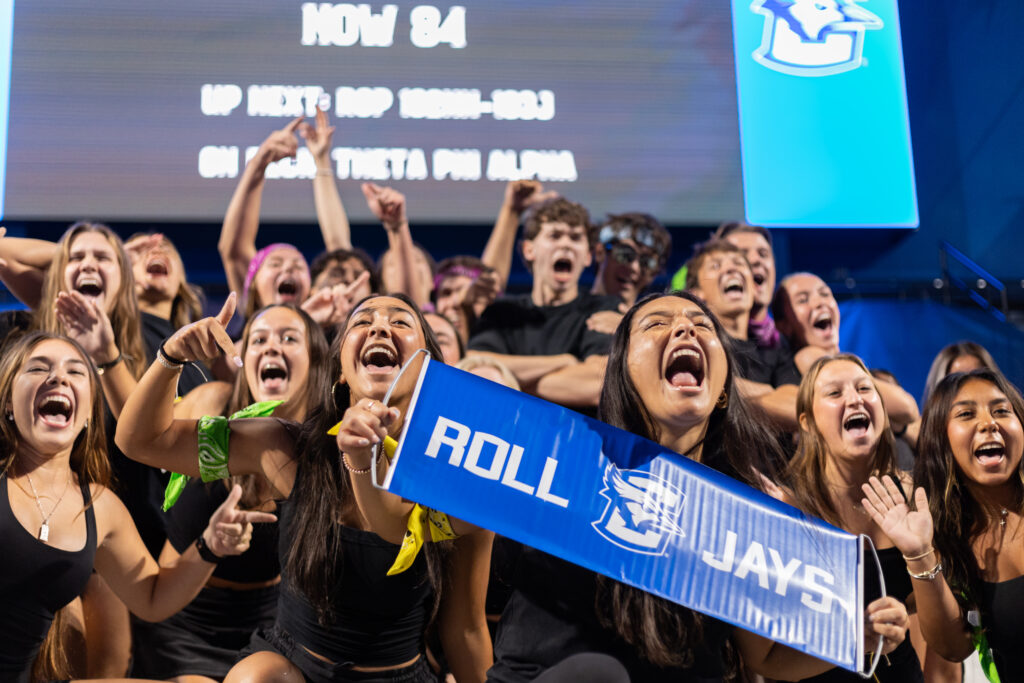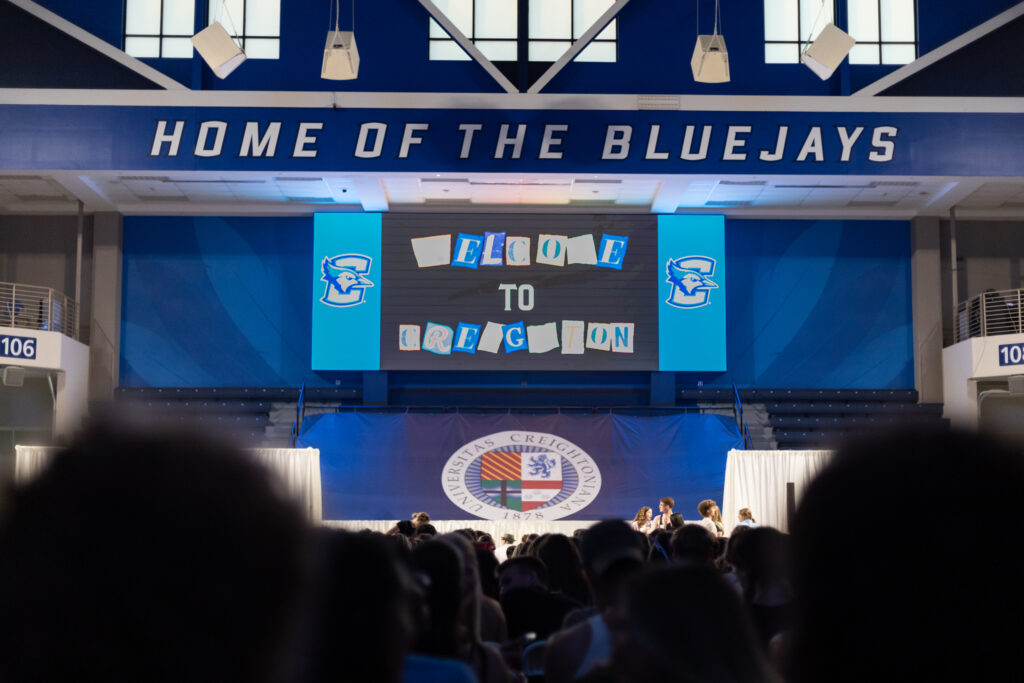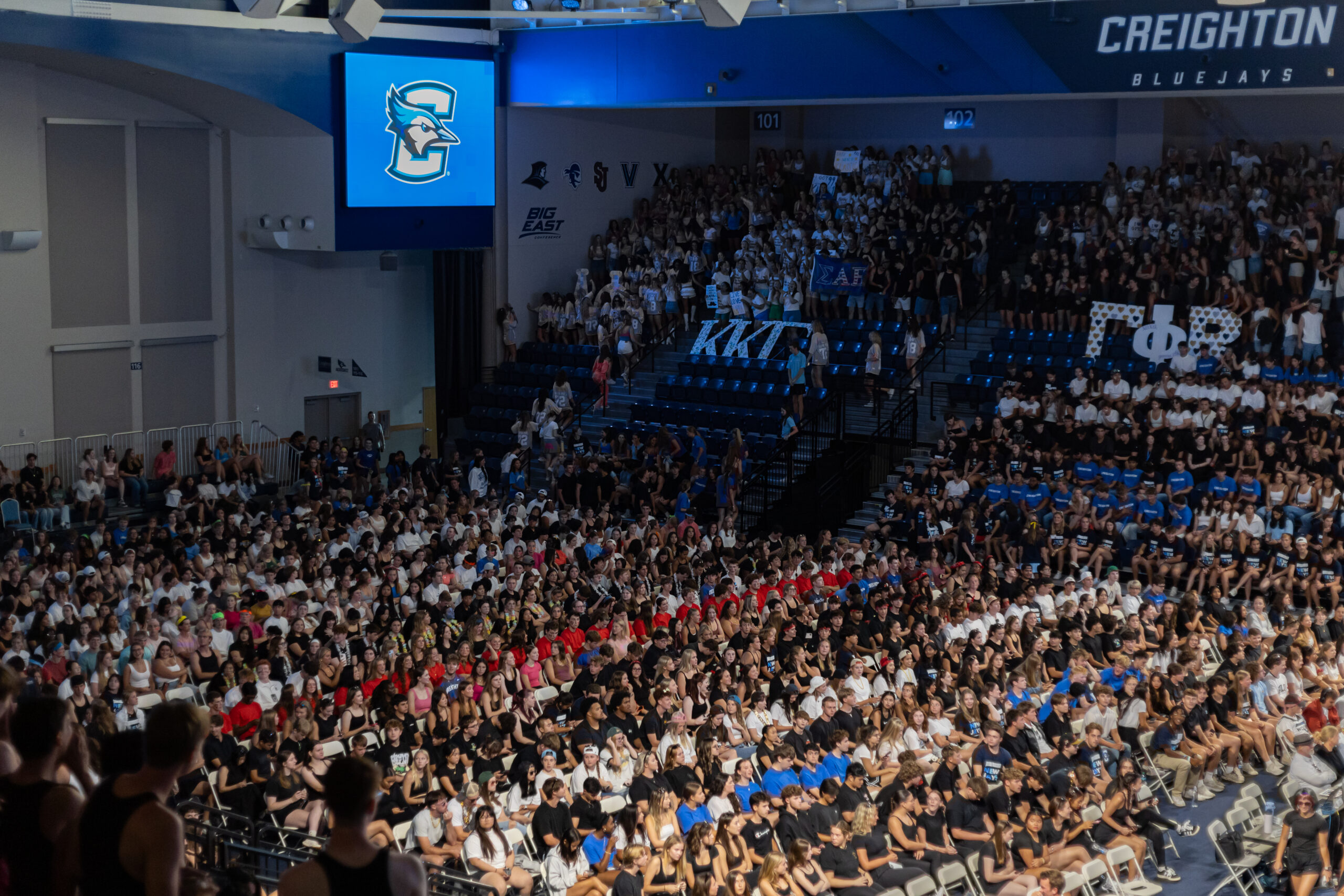Creighton University’s class of 2029 is the largest undergraduate class in school history with about 1,250 students.
Despite the large size, the university is not admitting more students than in the past. Rather, more people are accepting their offers to attend Creighton. In fact, Abby Maresh, the associate director of admissions, said that the university admitted fewer students this year.
“We just had a class that was really excited about what Creighton had to offer this year, which is awesome. … A lot of things went right this year,” Maresh said. “We had a big student athlete class as well, which is exciting. But we didn’t change anything big strategy wise.”
The class size — 1,250 people — is a rough estimate. The census that will clarify this data is taking place after today, Sept. 5, as it is the last day to withdraw from the university, according to Maresh.
“Our goal isn’t to be a 25,000-student university,” Maresh said. “We operate really, really well where we’re at, and our brand and identity of being a Jesuit Catholic institution [means] being a school that is very, very committed to being personalized for students. That doesn’t work at a 25- or 50,000[-student] institution.”
She clarified that the enrollment goal is set by the university board and leadership.
The size of the undergraduate enrollment rises and falls over time; it’s never linear, but overall, Creighton has maintained a growing class size, whereas the opposite is happening at other universities, Maresh said.
Due to the 2008 financial crisis, Maresh explained, families had fewer children or chose to wait to start having kids. So, now, there are fewer freshmen enrolling at universities compared to previous years; many secondary education programs have less students than in past years expressing interest in their institutions and accepting offers to attend their schools. This nationwide problem is deemed the “enrollment cliff” and, despite this cliff, Creighton was still able to admit their largest class to date. According to the National Center for Education Statistics, the number of undergraduate students enrolled in degree-granting postsecondary institutions declined 12% between 2010 and 2020.
Creighton has also not changed any overall tactics when it comes to recruitment, Maresh said, and more than half of students come from 10 major metro areas.
The size of the class of 2029 is a source of pride for the university and the admissions office, as a lot of time and effort is put into making sure that recruitment is not only done well, but also in a way that honors the university’s Jesuit value of “cura personalis,” or care for the whole person.
“I think our admissions office does an exceptional job living out ‘cura personalis’… and I think that shows in the relationships we build with students,” Maresh said. “And I think that really resonates with families when it’s easy to send out a mass email, but we pride ourselves on getting to know everyone one-on-one.”


